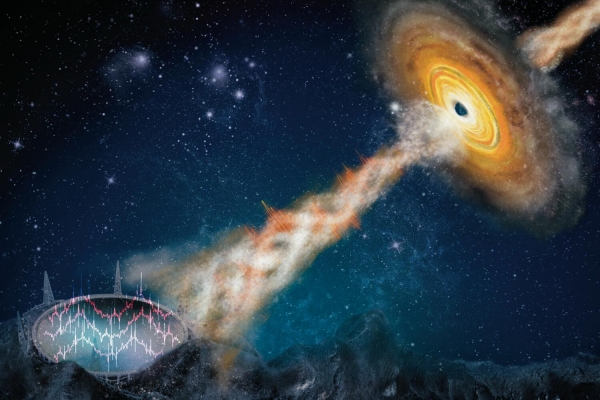Black holes are the most mysterious objects in the universe, with features that sound like they come straight from a sci-fi movie.
Stellar-mass black holes with masses of roughly 10 suns, for example, reveal their existence by eating materials from their companion stars. And in some instances, supermassive black holes accumulate at the center of some galaxies to form bright compact regions known as quasars with masses equal to millions to billions of our sun. A subset of accreting stellar-mass black holes that can launch jets of highly magnetized plasma are called microquasars.
An international team of scientists, including UNLV astrophysicist Bing Zhang, reports in the July 26 issue of Nature a dedicated observational campaign on the Galactic microquasar dubbed GRS 1915+105. The team revealed features of a microquasar system that have never before been seen.
Using the massive Five-hundred-meter Aperture Spherical radio Telescope (FAST) in China, astronomers discovered a quasi-periodic oscillation (QPO) signal in the radio band for the first time from any microquasar systems. QPOs are a phenomenon that astronomers use to understand how stellar systems like black holes function. And while they have been observed in X-rays from microquasars, their presence outside of this manner — as part of the system’s radio emission — is unique.
Read more at University of Nevada, Las Vegas
Image: Artist's conception of microquasar event captured by FAST Telescope. (Courtesy of Professor Wei Wang, Wuhan University via University of Nevada, Las Vegas)


